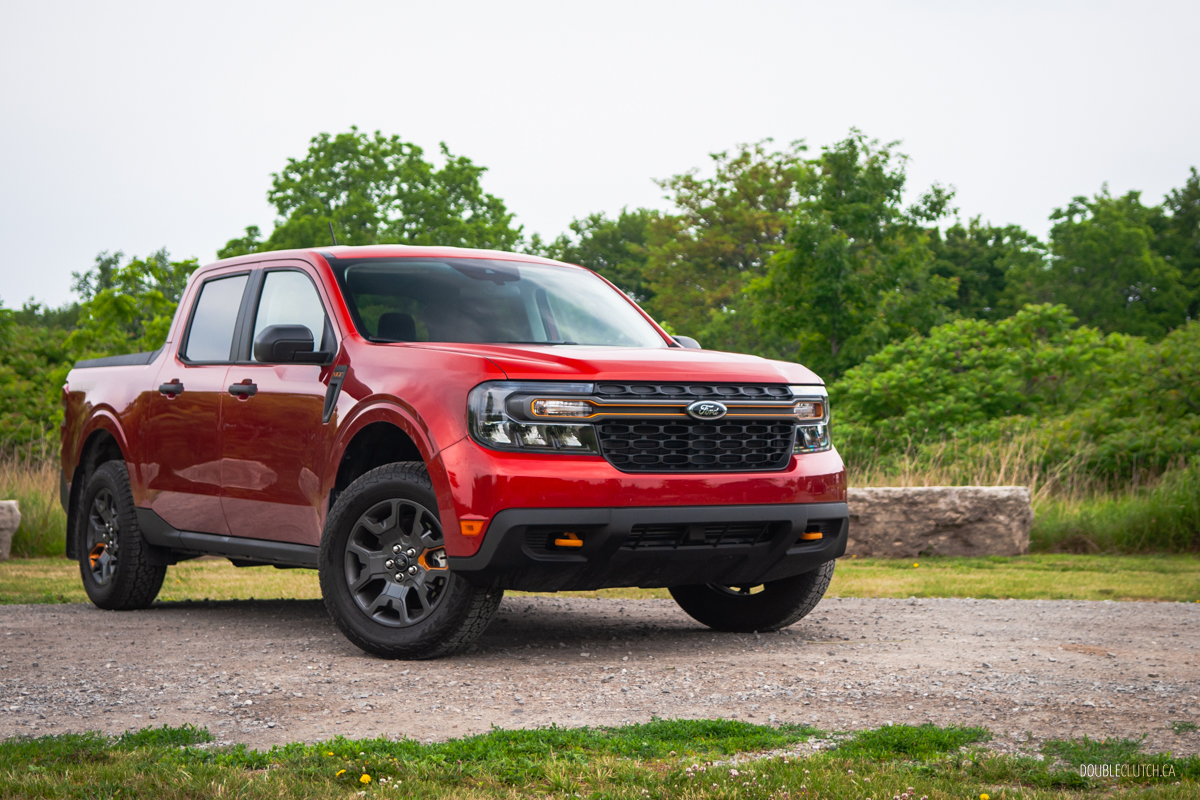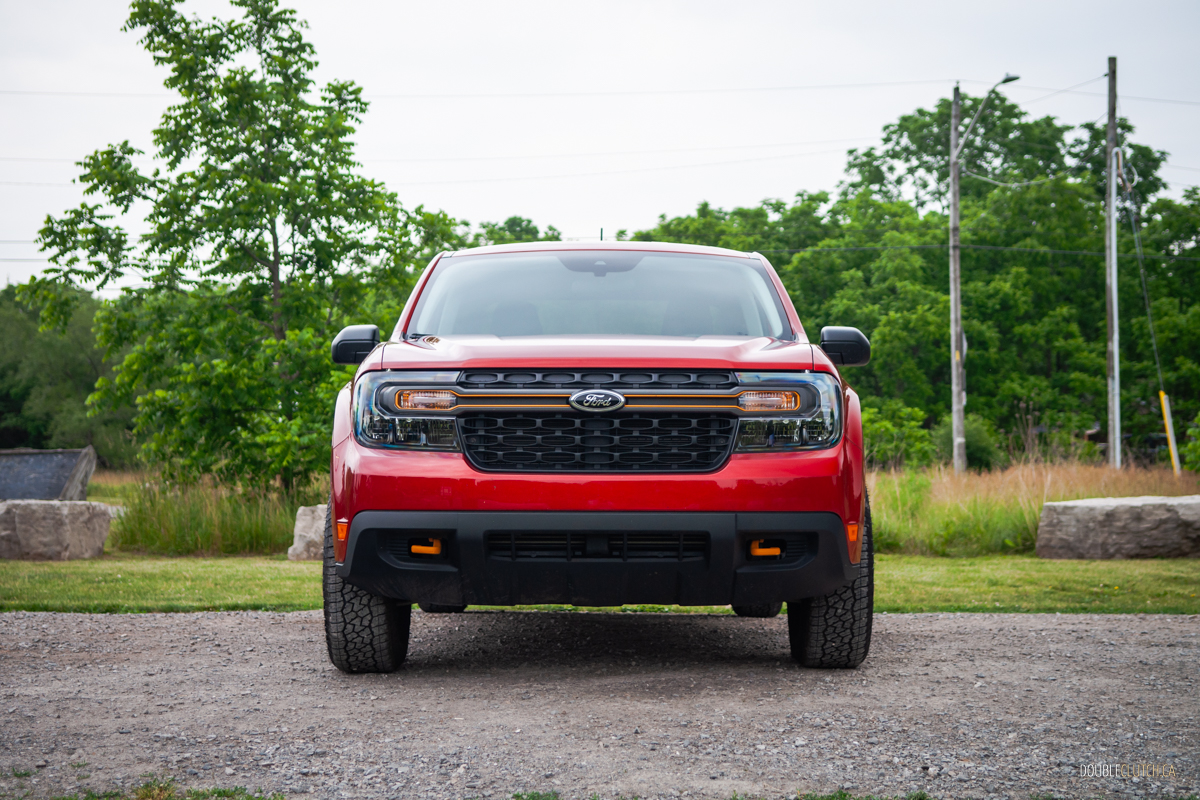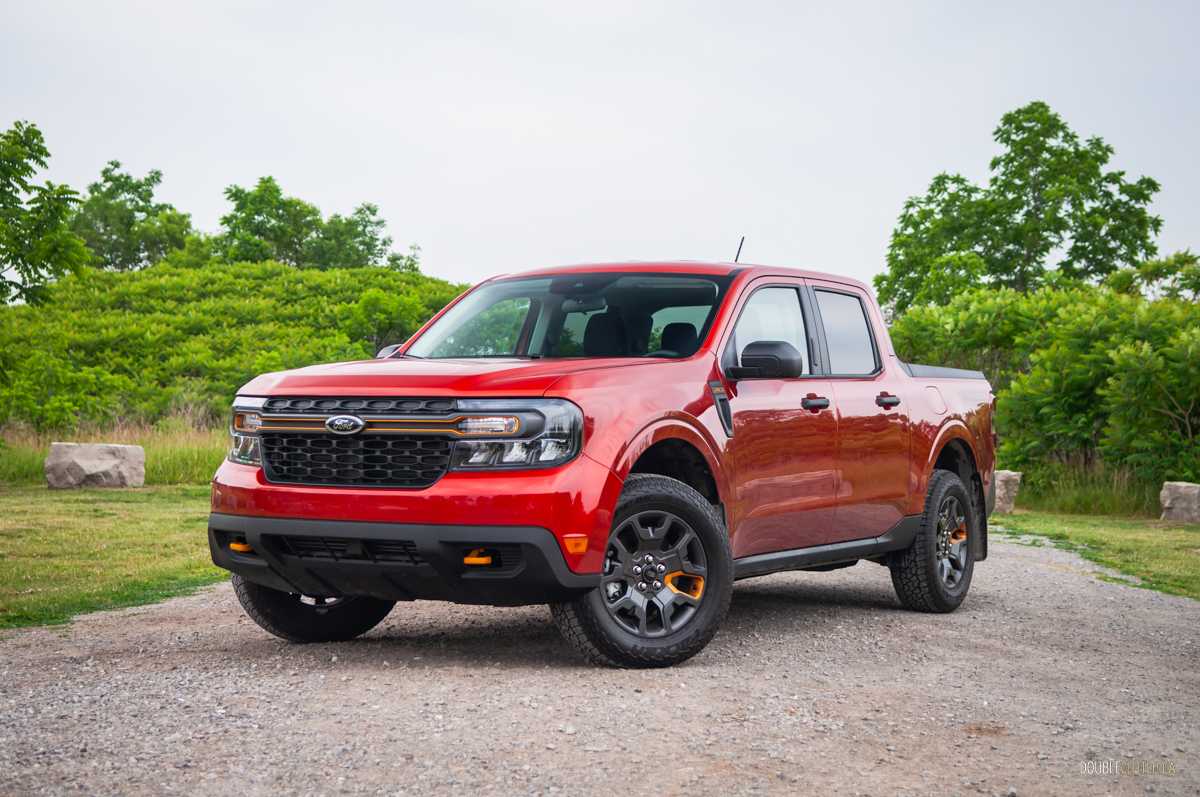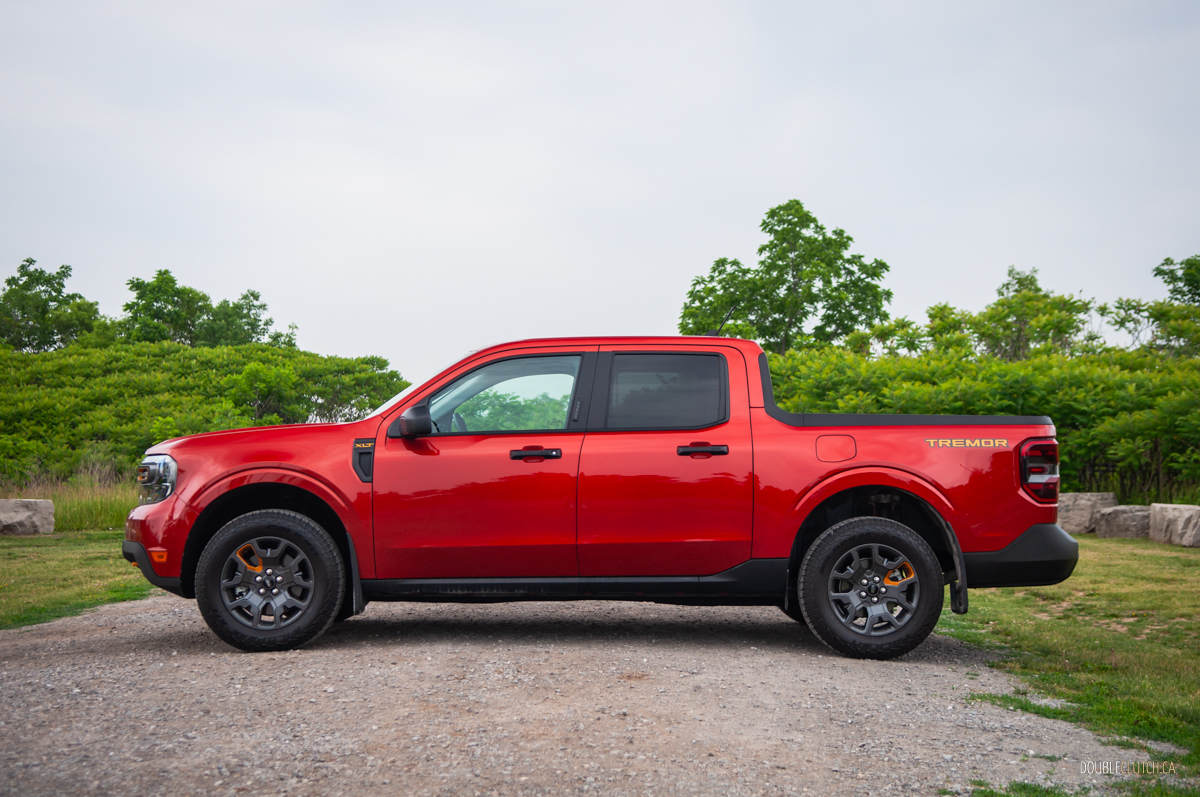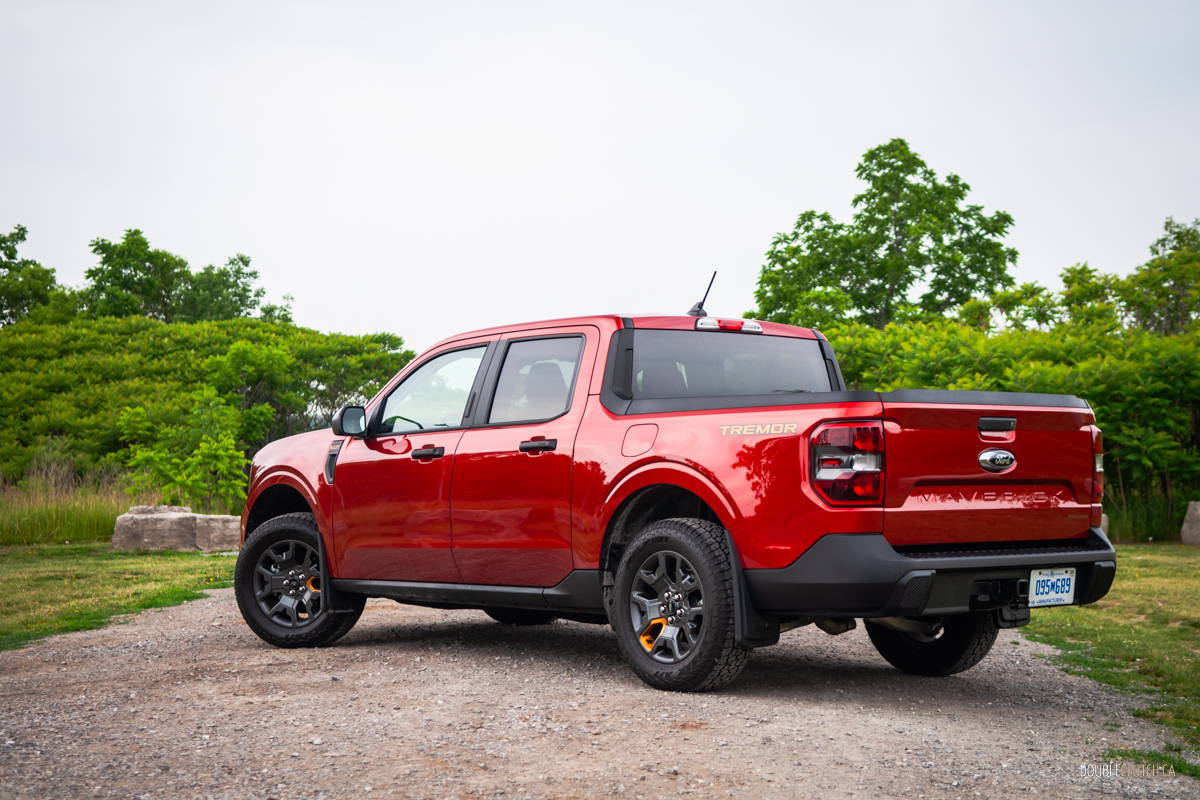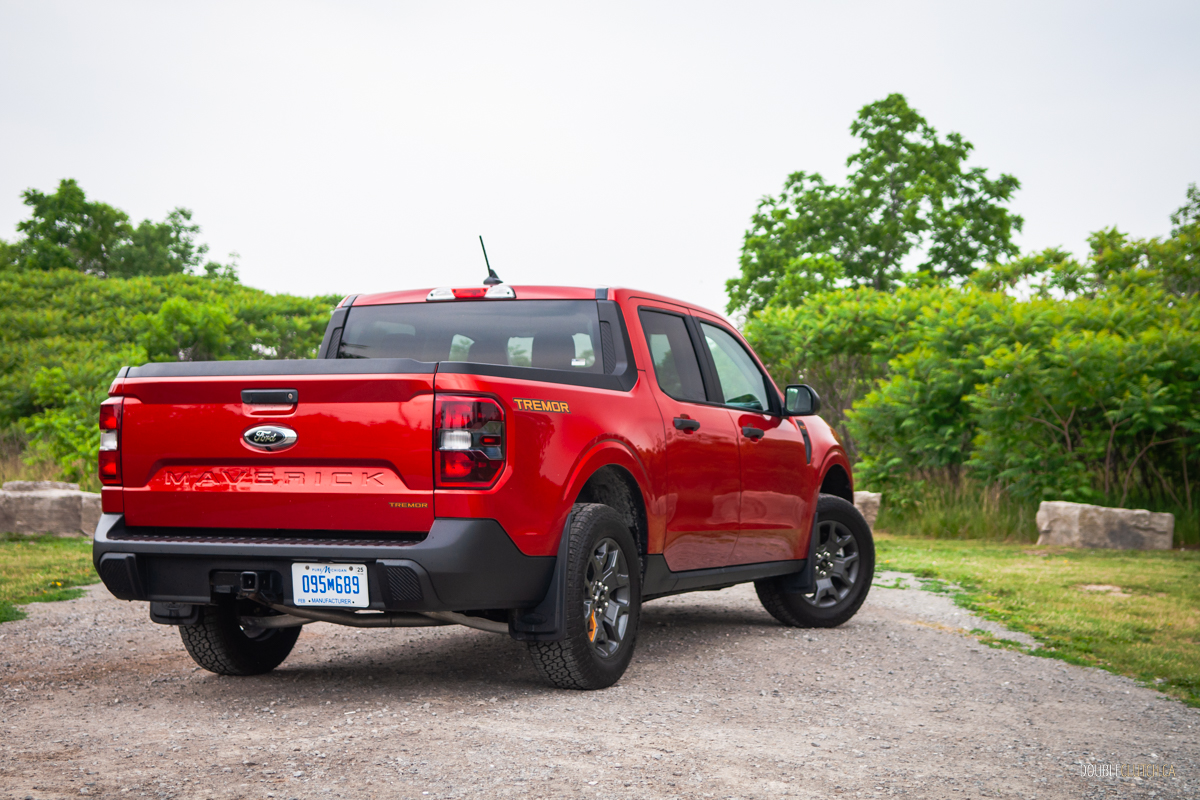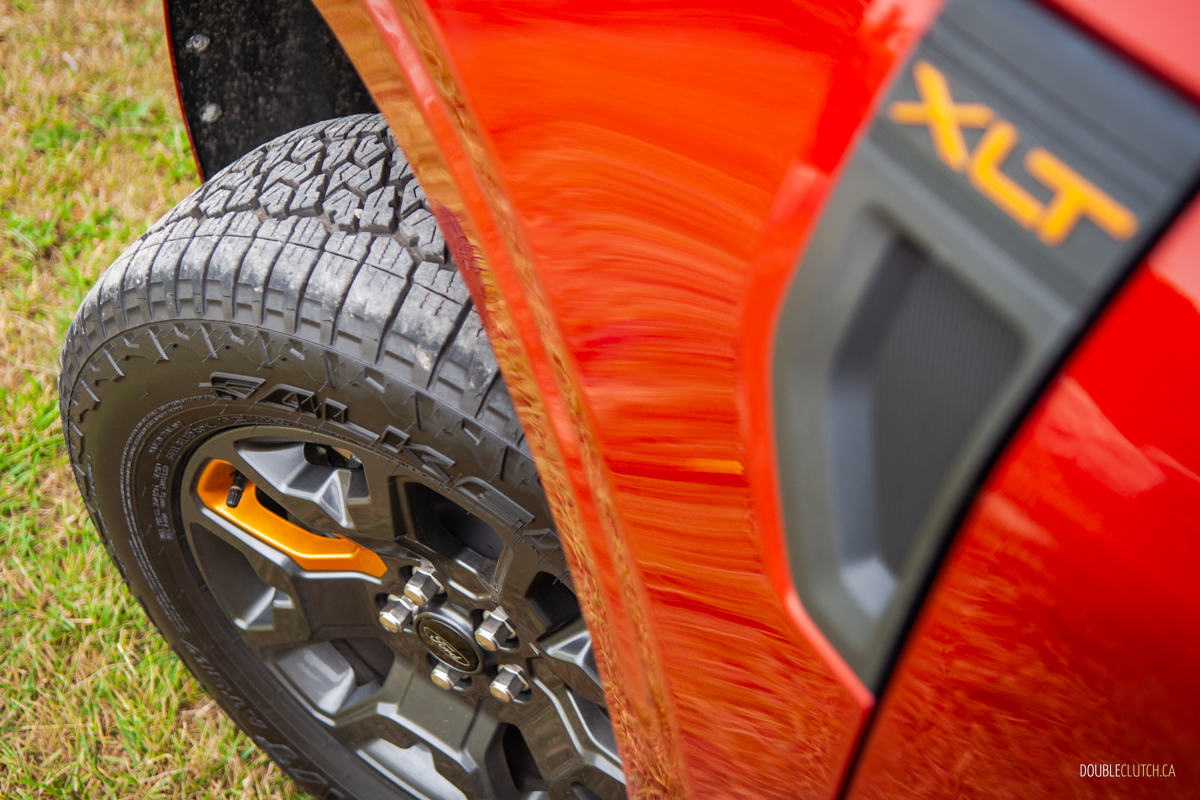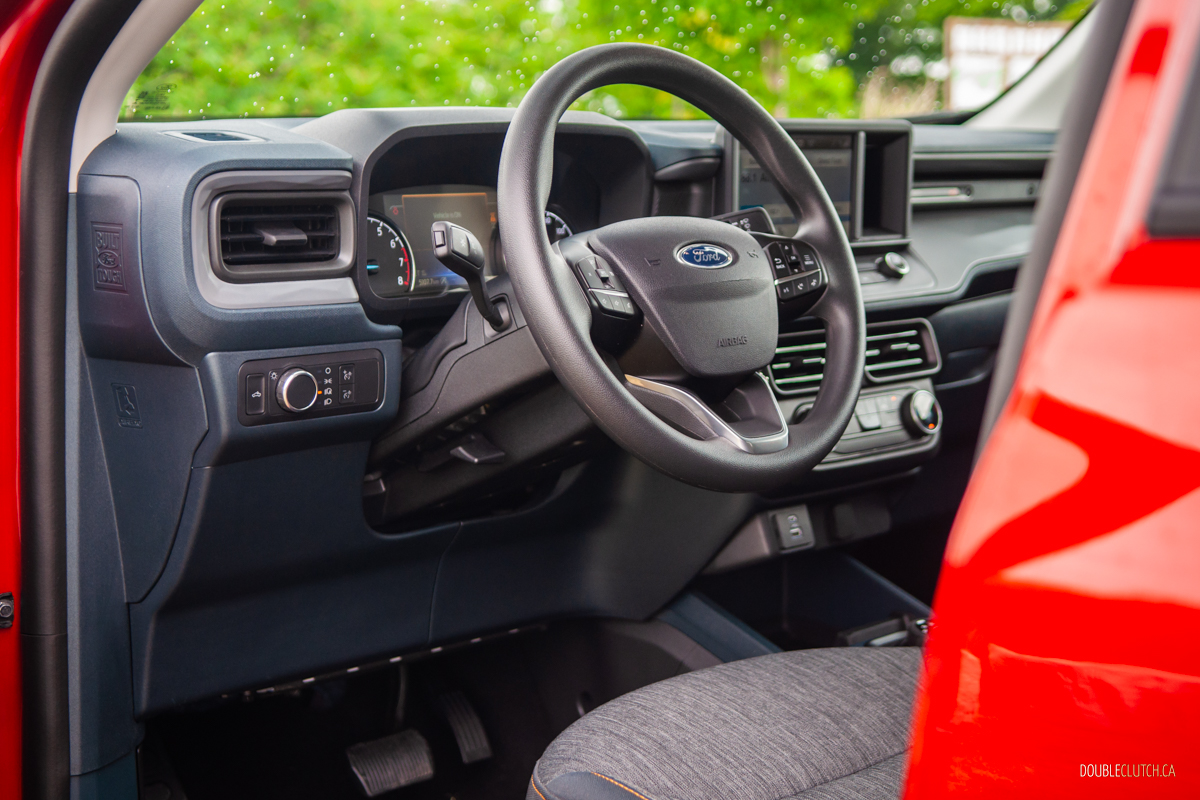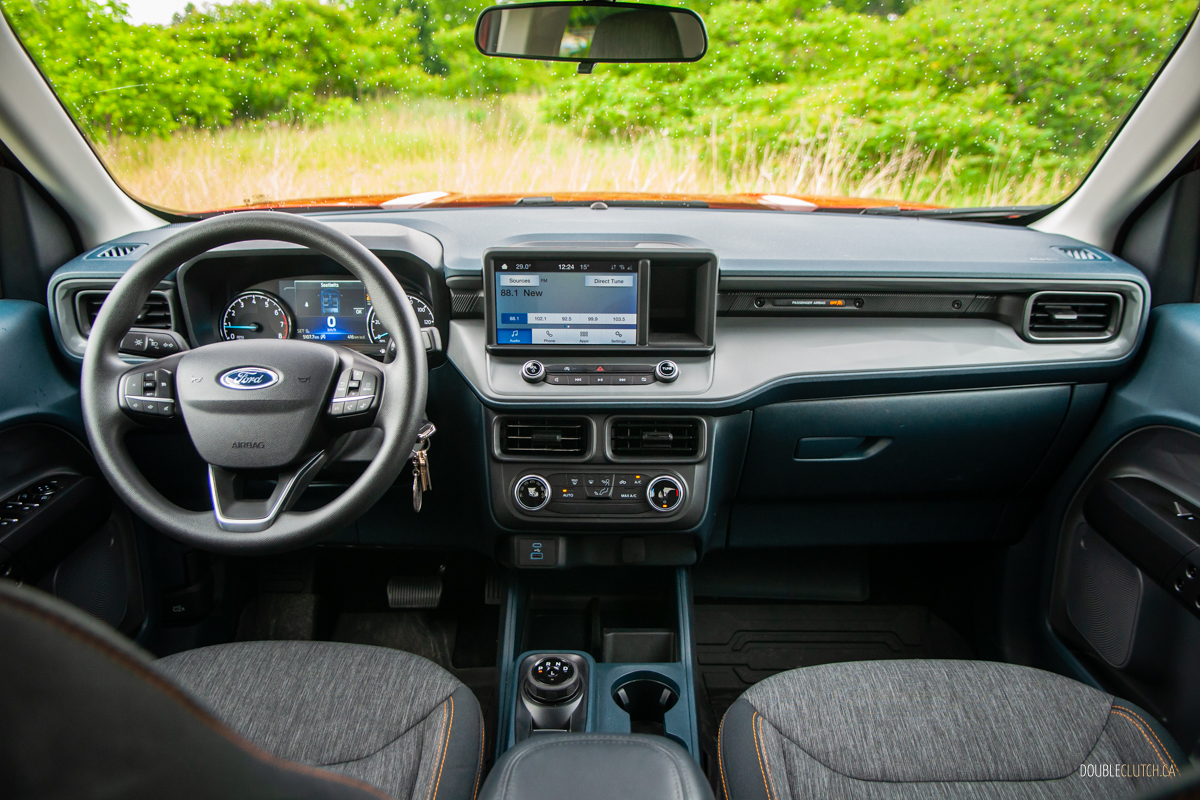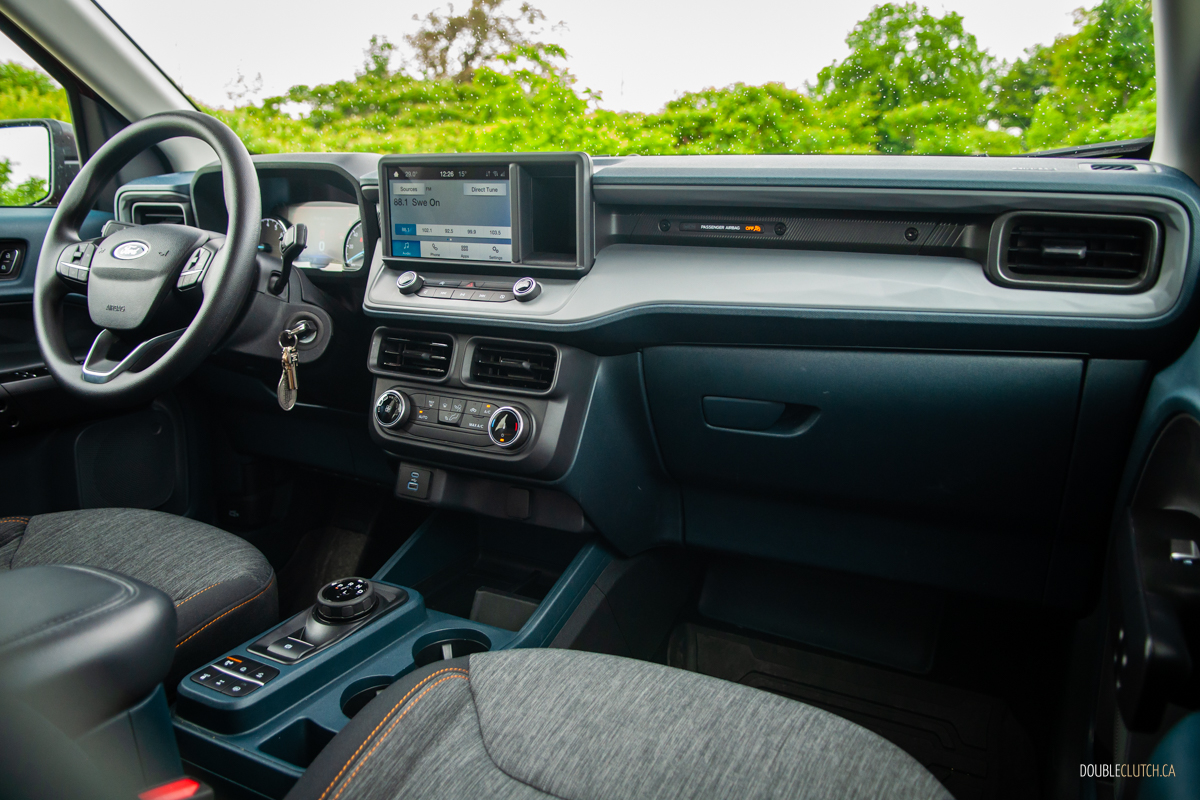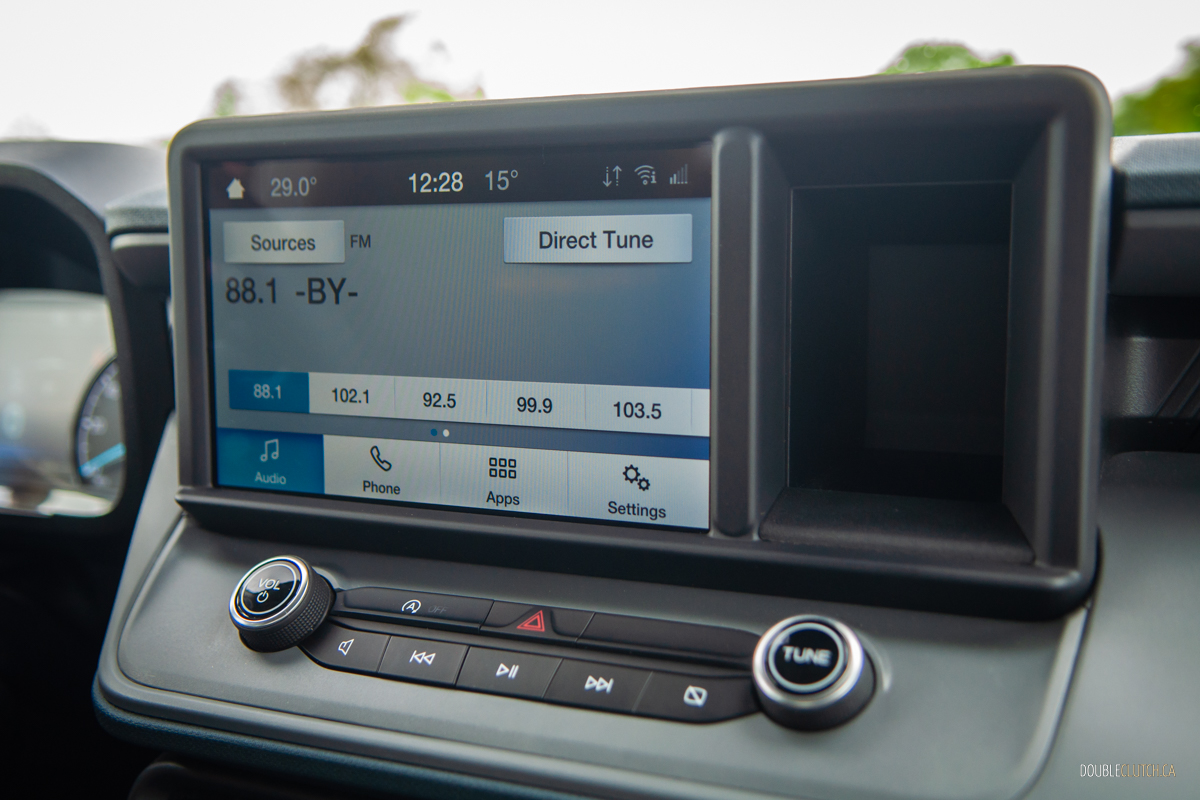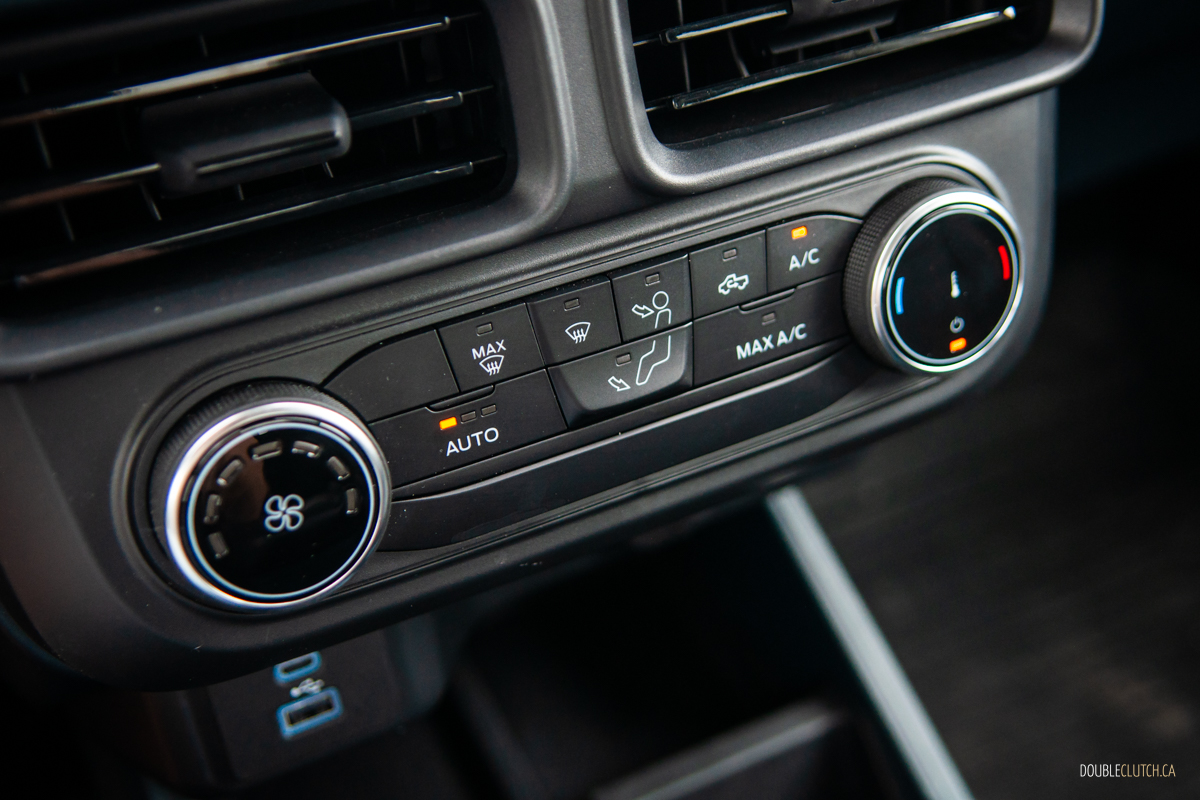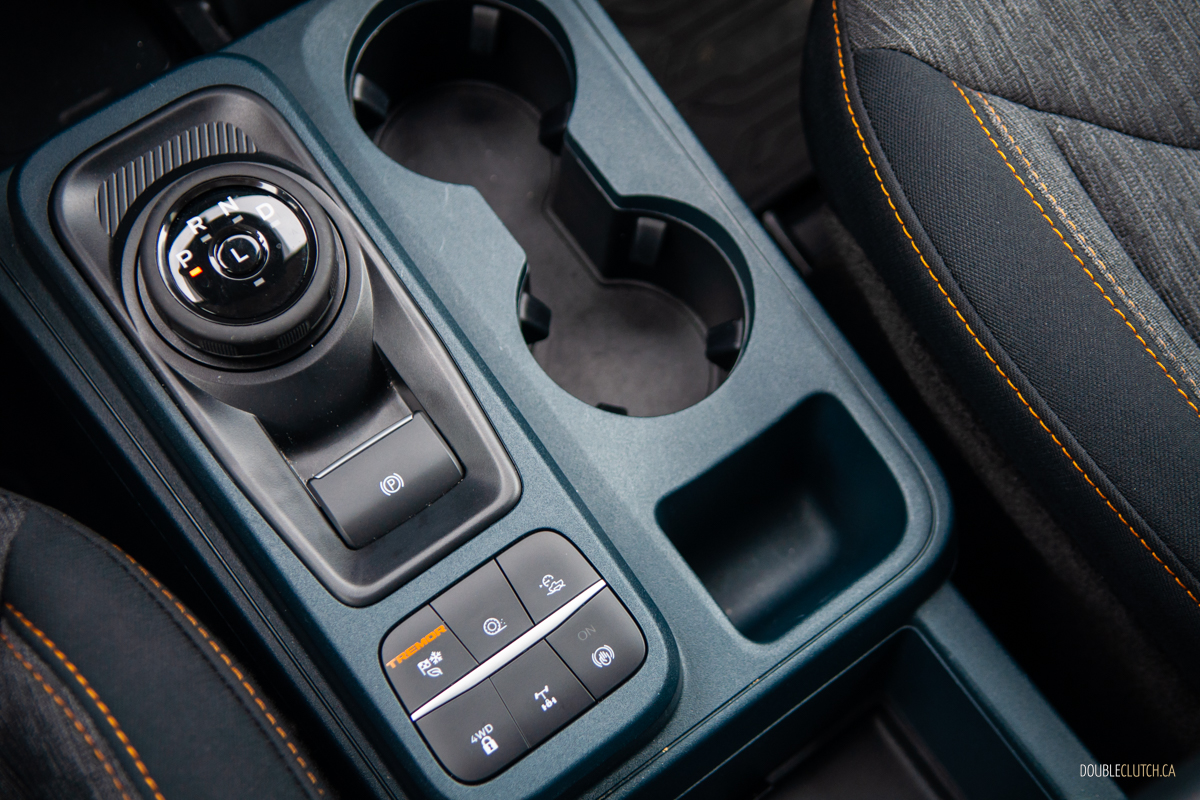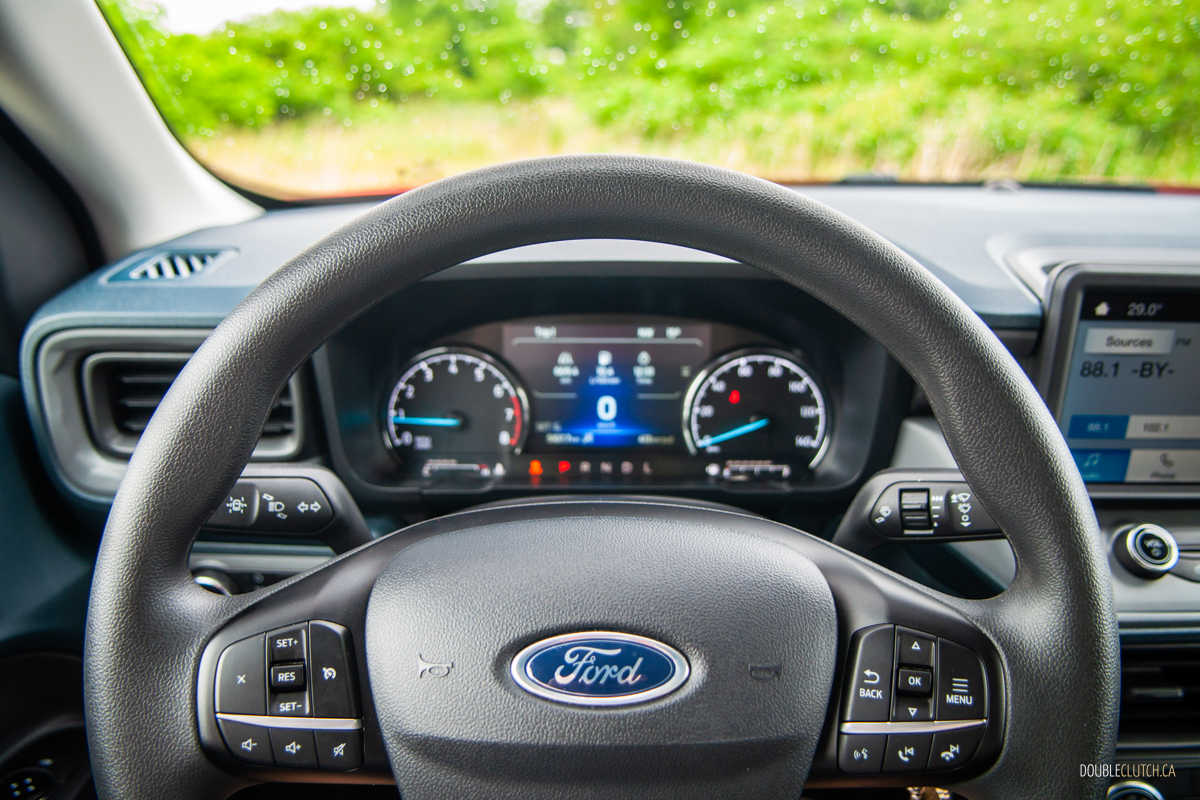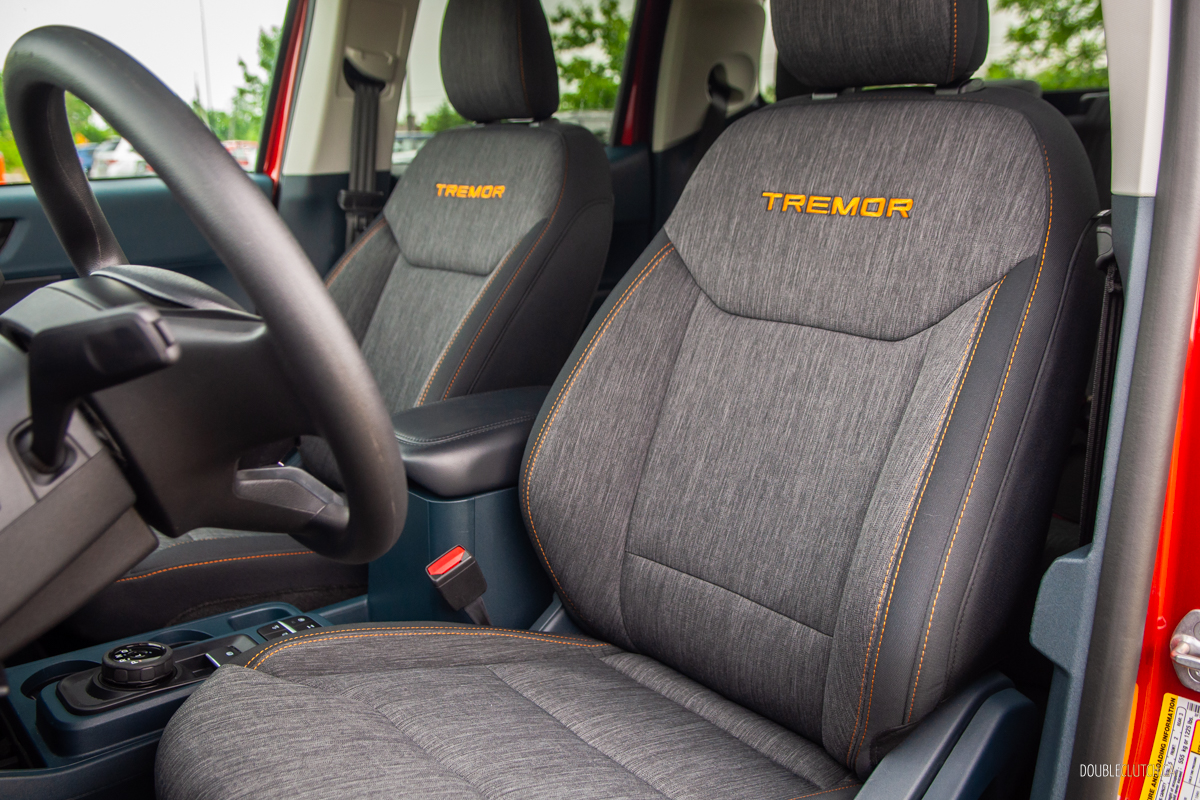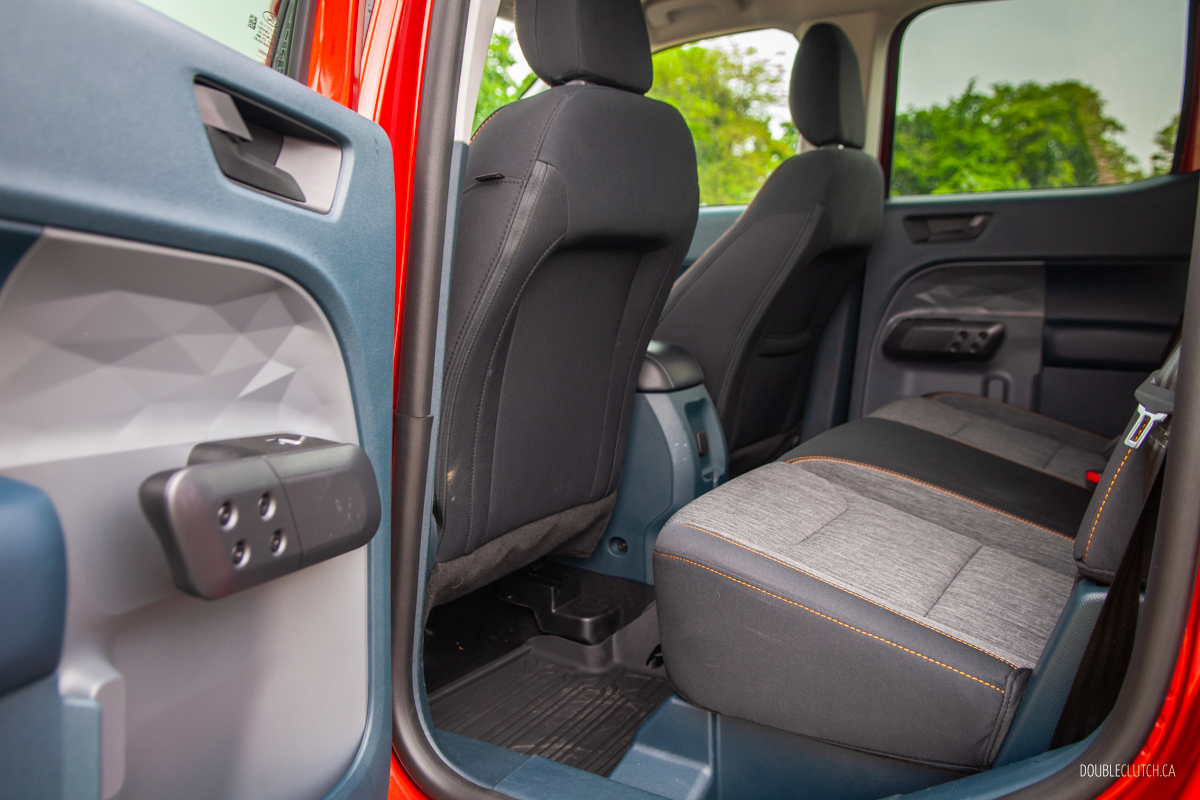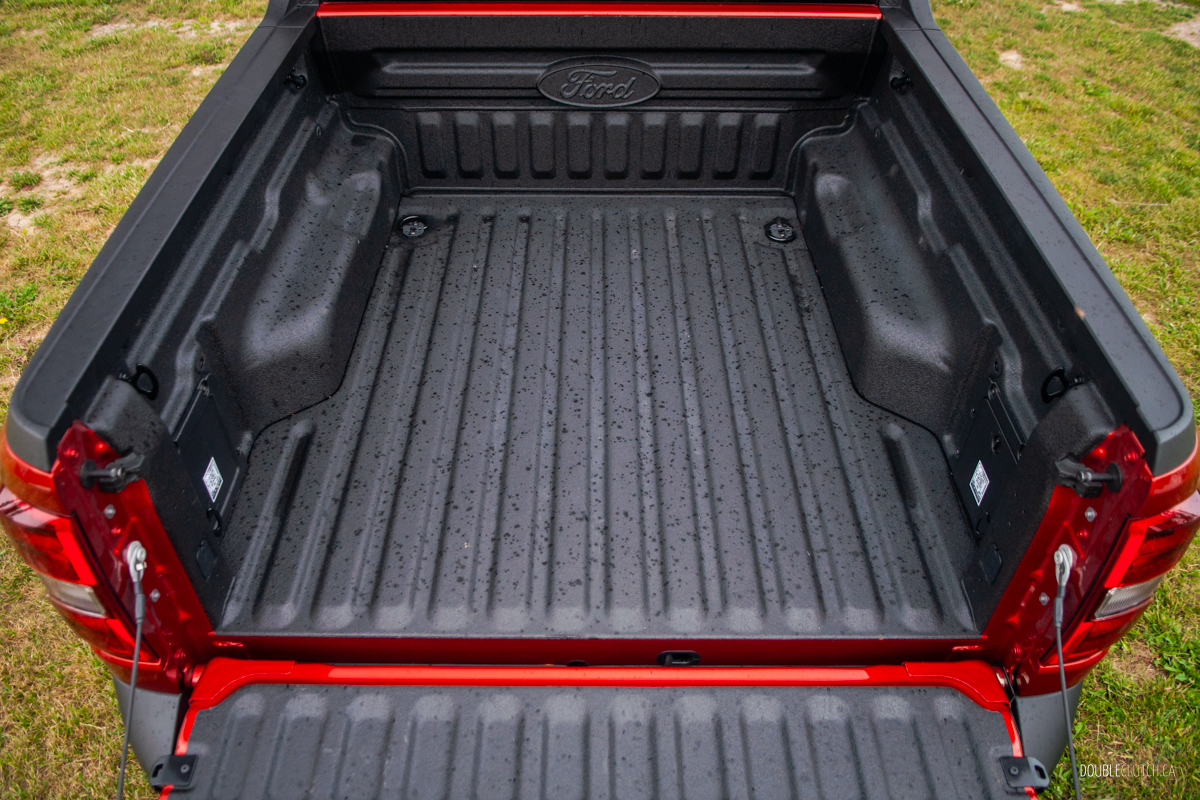I’ve said this once, I’ll say it again, and I’ll keep saying it until someone wrestles the megaphone out of my hands: pickups today are too big, too expensive, and a little too fancy for their own good. Ford is part of the problem as much as it is the solution: on one hand, they’ll happily sell you a $100,000 F-150 with white leather seats. On the other hand, they’ll also happily sell you that truck’s polar opposite — the 2023 Ford Maverick Tremor — although calling it a “truck” may be a bit of a stretch.
That’s because the Maverick is essentially a Bronco Sport, which is essentially an Escape, which is essentially a Focus underneath. But don’t let that sour you on the Maverick’s appeal — that car-based genealogy is the secret ingredient to what makes the Maverick such a great little trucklet. For every person out there craving an oversized brodozer, there’s someone else who wants the flexibility of a pickup in an inexpensive, right-sized, and far less garish package. This is where the Maverick shines.
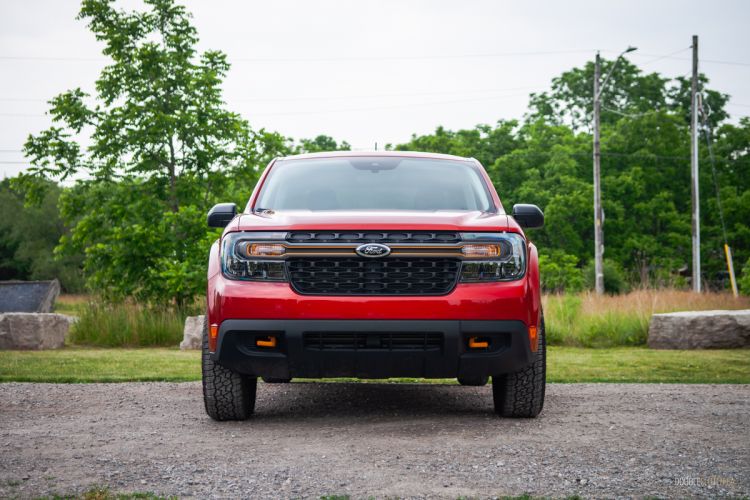
Choosing between the Maverick’s available powertrains is easier than choosing between ketchup and catsup. If fuel economy is your top priority, go for the hybrid. It starts with a 2.5-litre inline four-cylinder engine running on the Atkinson cycle. That’s teamed to two electric motors and a 1.1 kWh battery pack, working together to pump out 191 horsepower. Ford is seemingly too modest to dish a combined torque figure, but the gas engine alone is good for 155 pound-feet of torque. All hybrid Mavericks are front-wheel-drive and CVT-only.
You don’t buy the hybrid Maverick for the power, but you definitely buy it for the fuel economy. Officially, it’s rated at 5.8 L/100 kilometres in the city, 7.1 on the highway, and 6.4 combined. We handily beat those numbers in our most recent go with the Maverick Lariat, averaging 5.2 L/100 km.
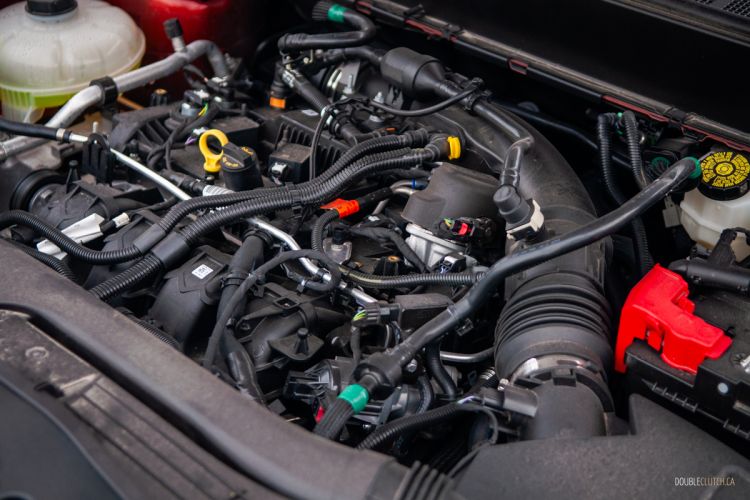
But if passing power or four-wheel traction is your priority, you’ll be better served by the optional 2.0-litre turbo-four. It’s a forced upgrade; any Maverick with all-wheel-drive — including our Tremor tester — gets the EcoBoost engine, but we’re not complaining. Rated at 250 hp and 277 lb-ft of torque, it’s a spunky little thing with ample kick, regardless of whether you’re mashing the throttle from a dig or a roll. The turbo/AWD combo also swaps out the CVT for an eight-speed automatic; it’s a good match, delivering snappy shifts when you need them and fading into the background when you don’t.
The hybrid has the obvious fuel economy advantage, but the Maverick’s gas powertrain isn’t too shabby. On paper, you’re looking at 10.9 L/100 km city, 8.4 highway, and 9.8 combined, although the Tremor is a little thirstier at 11.9 city, 9.9 highway, 11.0 L/100 km combined, no doubt owing to the more aggressive all-terrain rubber fitted at all four corners. We eked out a nowhere-close-to-the-hybrid-but-still-impressive 10.4 L/100 km in our time with the Tremor.
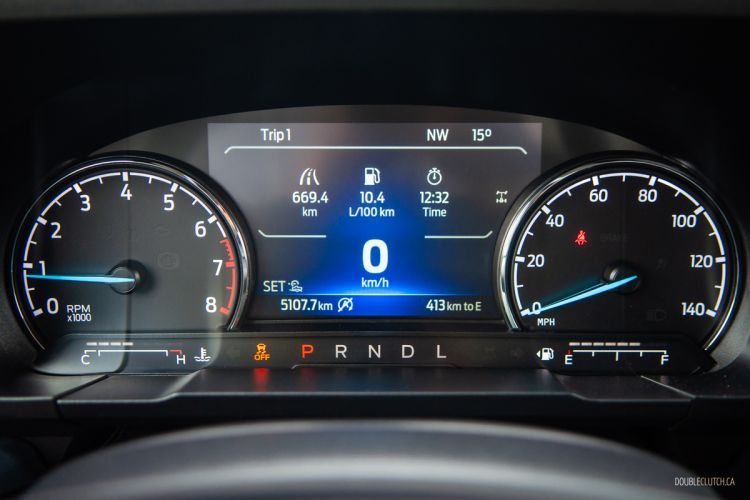
At this point, you’re probably wondering what’s so special about the Tremor package. The first thing you’ll probably notice are the Tremor decals on the bed and tailgate, as well as the countless orange accents inside and out, including a single orange pocket on each wheel. It’s a bit odd at first, but once you realize each orange pocket coincides with the valve stem placement, it’s a clever touch that actually makes sense.
Under the skin, the Tremor gets a one-inch suspension lift, skid plates for when you tackle trails (or perhaps more accurately, hopping curbs at Home Depot), numerous drive modes programmed into its brain, and an upgraded all-wheel-drive system lifted from the Bronco Sport Badlands, complete with a locking rear differential and the ability to divert all the torque to a single wheel. It also includes a beefier radiator, transmission cooler, and trailer hitch receiver lifted from the FX4 package — among countless other bits and bobs. And of course, you get those sweet Falken Wildpeak all-terrain tires that impact fuel economy, but more importantly, look super cool.
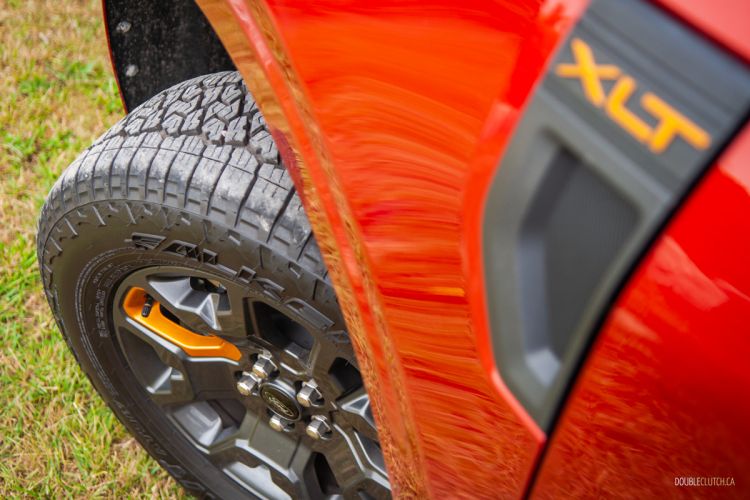
Even the cushiest of Rams and F-150s with air suspension at each corner can be jittery over less-than-perfect surfaces. The Maverick is generally a welcome contrast to the norm, but the Tremor goodies do impact livability just a wee bit. The ride is a touch stiffer owing to the upgraded springs and dampers, but it’s hardly punishing and still soaks up bumps, potholes, and most other imperfections reasonably well. Wind noise is well-controlled, too, but there’s a bit more road noise owing to the all-terrain tires. But by and large, the Maverick’s compact footprint and car-based underpinnings make it extremely easy to live with.
Inside, the Maverick continues to buck the pickup truck norm with a refreshingly frill-free cabin. There’s no quilted leather, massaging seats, or a big touchscreen. Sure, it’s pretty much all hard-touch plastic, but fit-and-finish is great, all the crucial controls are physical buttons and knobs — hallelujah! — and the overall layout is intuitive, not to mention there are plenty of cubbies and storage pockets throughout. Visibility all around is great, the seats are comfortable, and there’s plenty of headroom regardless of where you sit — although rear-seat passengers may be a little pinched for legroom. Our only knock is the infotainment; the eight-inch touchscreen running Ford’s previous-gen Sync 3 software is a good setup, but the glossy display positioned at an ever-so-slightly downward angle results in a lot of glare.
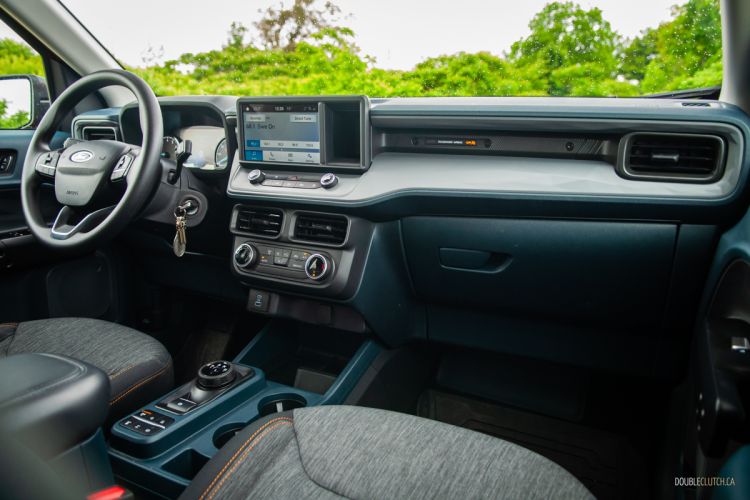
Despite the smaller footprint overall, the Maverick still gives you a good amount of pickup flexibility. The cab isn’t particularly cavernous, but the rear seat bench still flips up to accommodate taller items that should be protected from the elements — like house plants. Likewise, the 4.5-foot bed isn’t particularly long, but the unlimited ceiling you get accommodates even more tall items that wouldn’t otherwise fit in an Escape or a Bronco Sport — like more house plants. Towing capacity punches in at 2,000 pounds (907 kg) and the available, so-called 4k Tow package doubles that, but it’s unavailable with the Tremor. Still, it’s plenty, but if you regularly haul small campers, boats, or your Spec Miata race car to the track, you may be better off with just the the FX4 and 4k Tow packages.
The Maverick’s ace in the hole is its price, as long as you exercise some degree of self-control. At $31,100 to start for a base Maverick hybrid, that’s incredible value. Even $34,200 for a mid-range Maverick XLT with the turbo-four — the basis for the Tremor — and zero option boxes ticked is still pretty great. But if you’re not careful, things can get out of hand real quick. The Tremor package alone is $3,400; if you want blind-spot monitoring and lane-keep assist, that’ll be another $700 for the Co-Pilot360 package. With those high-ticket items, along with another $600 for red paint, $560 for the spray-in bedliner, and a few more bits and bobs, you’re looking at $39,685 as-tested.
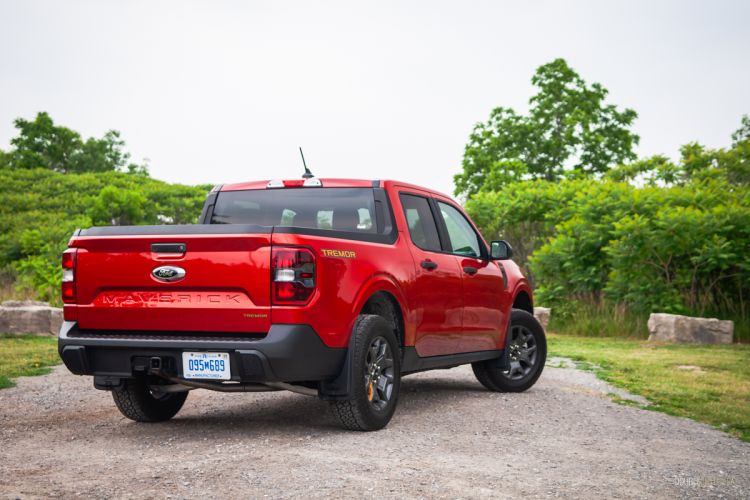
Now, a hair under 40-grand for a Maverick is pretty good, but you’re still missing out on a few creature comforts. After spending more time than I care to admit on Ford’s configurator, I’d be happy with an XLT with the turbo-four, bedliner, the FX4 and XLT Luxury packages, and Atlas Blue Metallic paint — a free colour! — for $37,520. That’s a bit more palpable.
The 2023 Ford Maverick Tremor is a breath of fresh air. Where most pickups today have grown too big, too expensive, and too ostentatious for their own good, the Maverick makes no false promises in the name of quasi-luxury. Instead, what you see is what you get — and what you get is a refreshingly simple, honest, and right-sized trucklet that’s great on gas, and as long as you go easy on the options, the good kind of cheap.

